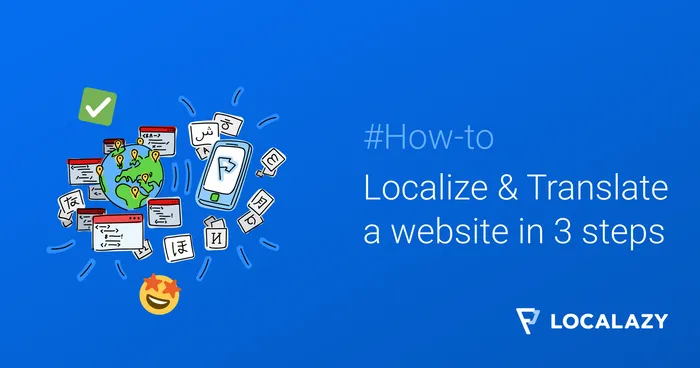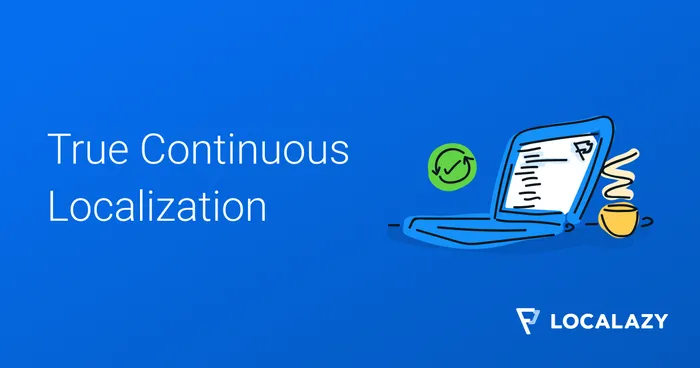If you've landed on this blog, chances are you're ready to expand into new markets with the help of localization. This probably means seeking professional guidance from a digital agency specializing in multilingual website development, an expert localization team, or both!
The team at digital agency Veedoo has put together some key findings that confirm that 2024 is the year of multilingual website development for businesses and organizations. The evidence is crystal-clear: data from multiple studies supports that modern multilingual websites are instrumental to deploying your business for audiences in new countries. Using cutting-edge AI translation and localization technologies to your advantage is the first step. Here's why.
💻 The benefits of a multi-language website 🔗
1. Reaching a larger audience 🔗
One of the primary benefits of having a multilingual website is the ability to reach a broader audience. Did you know that 52.1% of all web content in 2024 is in English? 🇬🇧 However, it's essential not to overlook the remaining 47.9%, which represents significant business potential. Consider these statistics on the most frequently used languages for web content after English: Spanish, which accounts for 5.5%, and German, which comprises 4.8%.
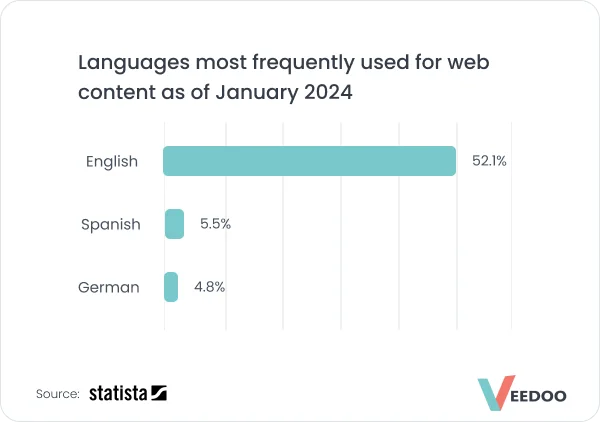
Moreover, a survey of 8,709 consumers across 29 countries found that 76% prefer purchasing products with information in their own language:
- 🗣️ Even if your audience is proficient in English, studies showed that 65% are more likely to make a purchase when browsing product pages in their native language.
- 🚫 Furthermore, 40% of users might choose not to make a purchase from websites that are not available in their preferred language.
Offering multiple language website options expands your business proposition to previously untapped customer segments, enhancing your sales and profits.
2. Improving customer experience 🔗
Many companies don't understand how important it is to grab a worldwide audience. It's not just about translating stuff word-for-word. You've got to give them content that actually clicks with them. It should show off your brand, make you look good, and build trust. That's the whole package, you know? But so many businesses miss the boat on this one.
CSA Research surveyed 8,709 consumers in 29 countries in their native languages to analyze their customer experience preferences in their mother tongue versus a foreign language such as English. They wanted to know if it's worth it for companies to bother translating their content. 💭
According to a survey by CSA Research, companies can miss out on 40% or more of their potential customer base if they don't speak their language
It turns out that it's a pretty big deal for businesses trying to sell their products around the world. CSA Research says people used to think enough customers were okay with using English online, especially when buying fancy or pricey items. However, their 2020 research shows that if a company doesn't bother to make their website speak the local language, they could be missing out on a whopping 40% or more potential customers. That's a lot!

Basically, even if people want what you're selling on your English site, most would rather shop in their own language. They want to think, act, and buy stuff without wrestling with a foreign language.
The research also indicates that nationality significantly influences the demand for content in local languages during online transactions. 🇩🇪 Notably, in Germany, 57% of consumers exclusively purchase from websites in their native language. Additionally, more than 50% of respondents from six other nationalities expressed a similar preference.
Other key findings include:
- 📖 65% of respondents prefer content in their language, even if it's of poor quality.
- 🖇️ 67% are willing to tolerate mixed languages on a website.
- 💬 73% prioritize having product reviews available in their language above all else.
- 🏷️ 76% prefer products with information presented in their native language.
- 💻 66% utilize online machine translation.
- ⛓️💥 40% of respondents refrain from making purchases on websites that are not in their preferred language.
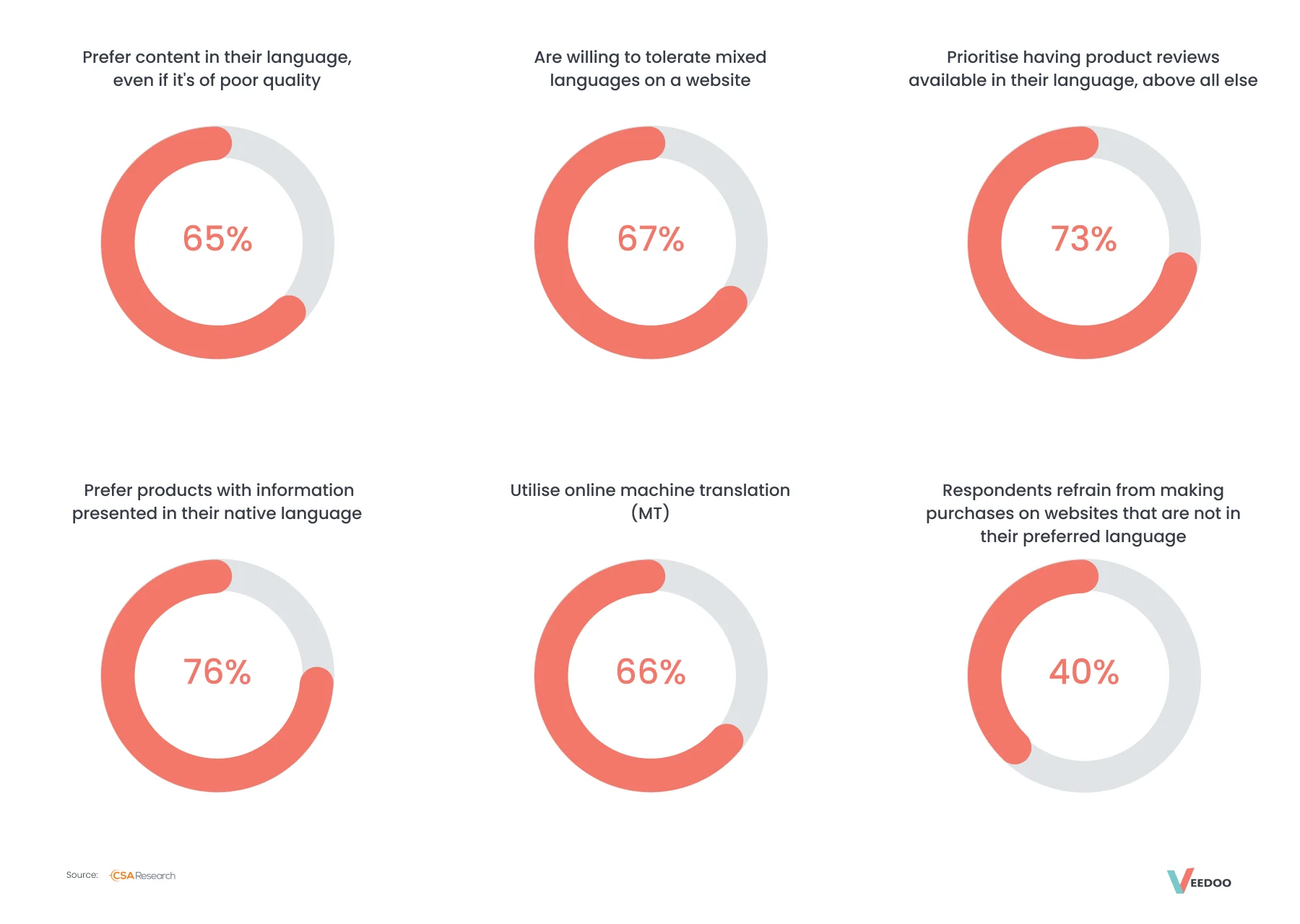
3. Getting your brand known worldwide 🔗
If you want your brand to be big around the globe, you've got to be flexible. You need to adjust to what different people want. These days, having a website in multiple languages isn't just a cool extra – it's a must-have if you want to succeed.
While 2024 forecasts show modest growth in retail and e-commerce compared to historical trends, the global economic landscape is stabilizing. We anticipate fewer downturns and reduced volatility worldwide. Steady growth is projected for the coming years, with certain emerging markets poised for expansion. 📈
This outlook underscores the importance of a solid global presence. Businesses that invest in comprehensive localization strategies now will be well-positioned to capitalize on future market surges and maintain a competitive edge internationally.
Localization is not a "cool extra" anymore: it's a must to position well and have a competitive edge in the global economic landscape
eMarketer's forecast for 2024 reveals that the global e-commerce market will cross the $6 trillion mark this year, and 20.1% of all retail sales will be conducted digitally. Excluding China from the calculus, the worldwide e-commerce share will be 12.4%.
Projections from their 2022 report indicated that by 2025, the e-commerce market could surpass $7 trillion. Additionally, Morgan Stanley anticipated a potential increase to $5.4 trillion by 2026. They also highlighted an uptick in the U.S. e-commerce market, which could represent 31% of sales by 2026, up from 23% in 2023.
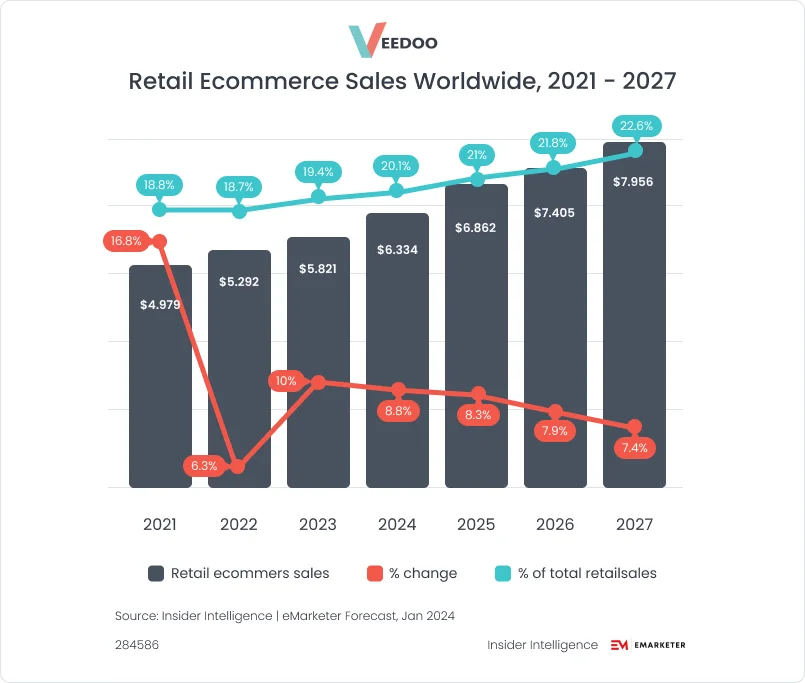
Looking at the growth potential, you should consider making your online website available in multiple languages. It's a great way to break into those new markets you've got your eye on.
The key is making sure customers can easily understand your products, how much they cost, and what others think of them. Tailoring the shop experience to each local market is more likely to win over customers in that area. Don't forget about customer support — it must be easy to find and use. Bottom line: the more at home people feel on your website, the more likely they are to buy something. It's as simple as that.
4. Making your marketing cost-efficient 🔗
In 2024, businesses, organizations, and especially e-commerce are rapidly implementing multiple languages to localize for new markets and to reach a global audience in their native languages. This has been a priority for several years, but now we are seeing significant progress in the implementation of multilingual websites.
The acceleration in localization has been driven by the emergence and widespread adoption of various AI products, which enable companies to quickly initiate localization processes, perform fairly decent translations into different languages, automate marketing and sales processes, and more.
According to a recent McKinsey report, organizations are now commonly using generative AI. One-third of all respondents say their organizations regularly use generative AI in at least one function — meaning that 60% of companies with reported AI adoption are using generative AI. Moreover, 40% of those reporting AI adoption in their organizations say their companies expect to invest more in AI overall thanks to generative AI, and 28% state that generative AI use is already on their board's agenda.
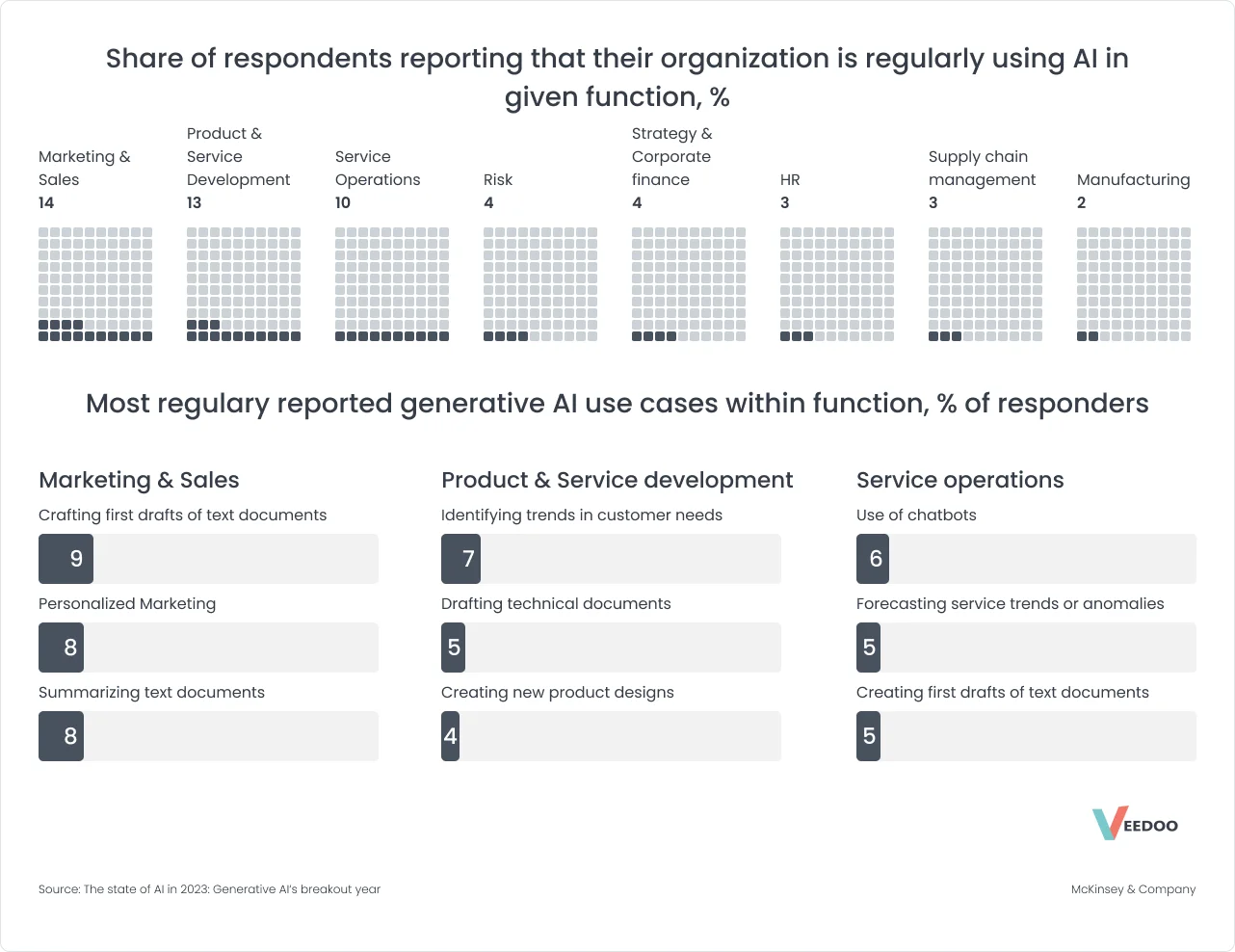
Recent research from Microsoft and LinkedIn has also shown a significant shift in how generative AI is being used in the workplace. It has highlighted that many companies have already changed their processes, created new job guidelines, and developed new approaches to task execution, all thanks to AI's capabilities.
Today, companies of all sizes have access to an ever-increasing number of AI solutions, including platforms, CMS, and plugins, to implement multilingualism for entering new markets and communicating with new target audience segments in their native languages. But that's not all – there's a real buzz around clever technology that facilitates website translation. These new smart tools are making it easier for companies of all sizes to build and manage multilingual websites that look great and enhance their marketing efforts.
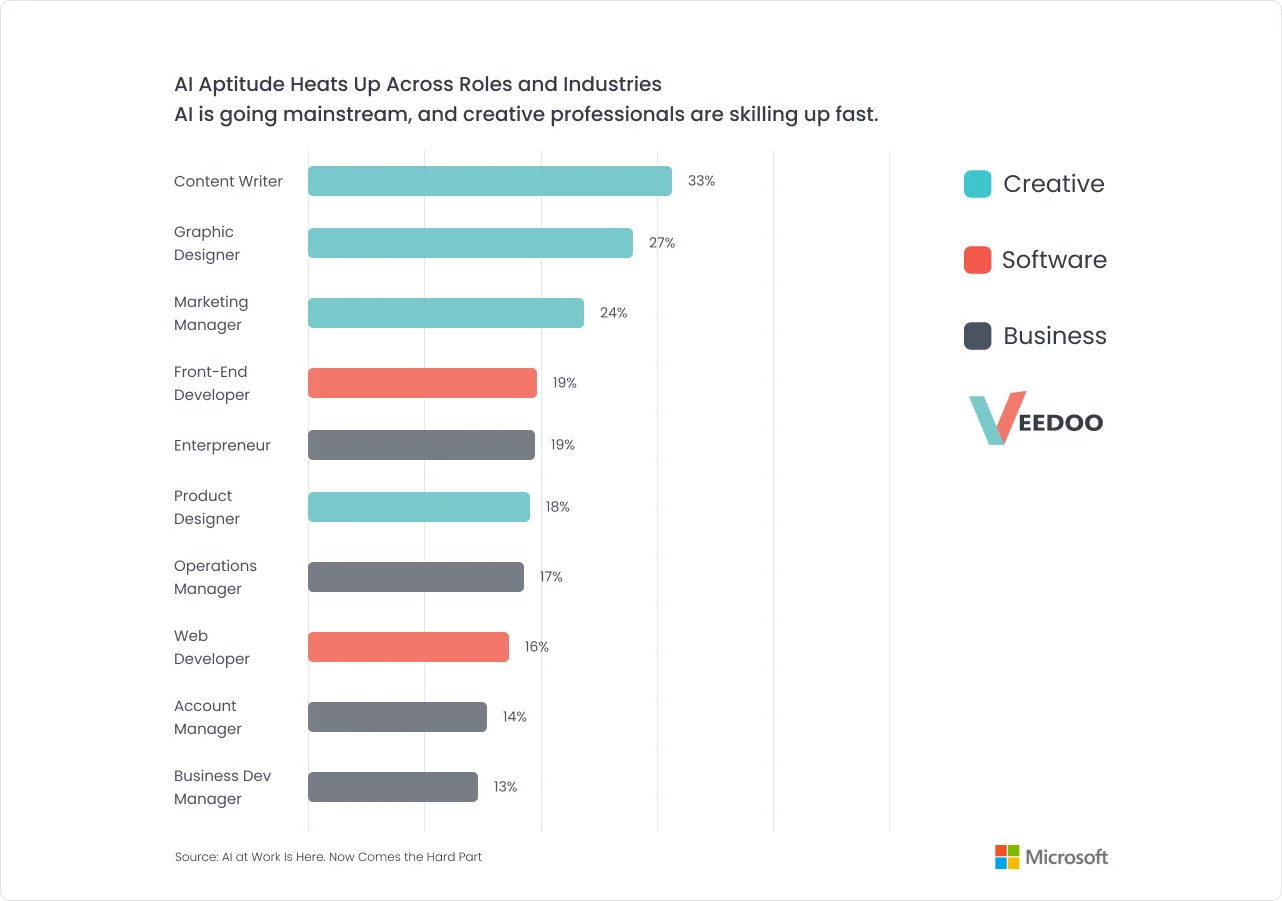
Want to speed up getting your business to speak multiple languages online? You can accelerate the localization of your business with a multilingual website by using specialized software like Localazy. They offer a comprehensive approach that not only uses AI and MT for quick content translation into various languages but also ensures professional translator checks and the implementation of multilingual SEO to boost your site's search visibility.
Let's face it: most purchases and partnerships start with an online search these days. 🔍 So, if you want to make an impact online, you need to be right up there in the search results – your online success heavily depends on achieving high rankings on search engine results pages. The higher your website ranks, the more likely consumers are to find it.

✔️ Conclusion 🔗
It is now more apparent than ever that the future of global businesses is based on multilingualism. In 2024, localization for companies and organizations through multilingual websites has become more accessible and faster to implement than before, and modern AI solutions can accelerate the process.
Services like Localazy offer comprehensive website localization in multiple languages for businesses and organizations that want to implement multilingual capabilities quickly. These services provide high-quality translations by professional translators and are optimized for multilingual SEO.
As you can see, localization is a big contributor to success in 2024. No matter the industry or size, adjusting your content and offering well-developed, smart websites to accompany international audiences is a strategy that will pay off and get you ahead of the competition. Get in touch and see how a multilingual website by Veedoo, utilizing Localazy for translation and SEO content services, can help.



